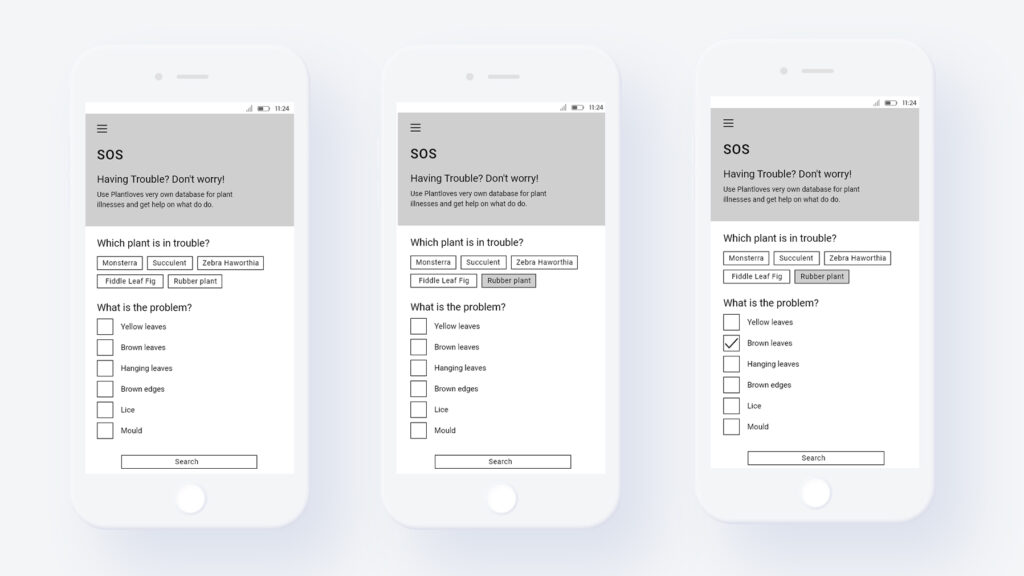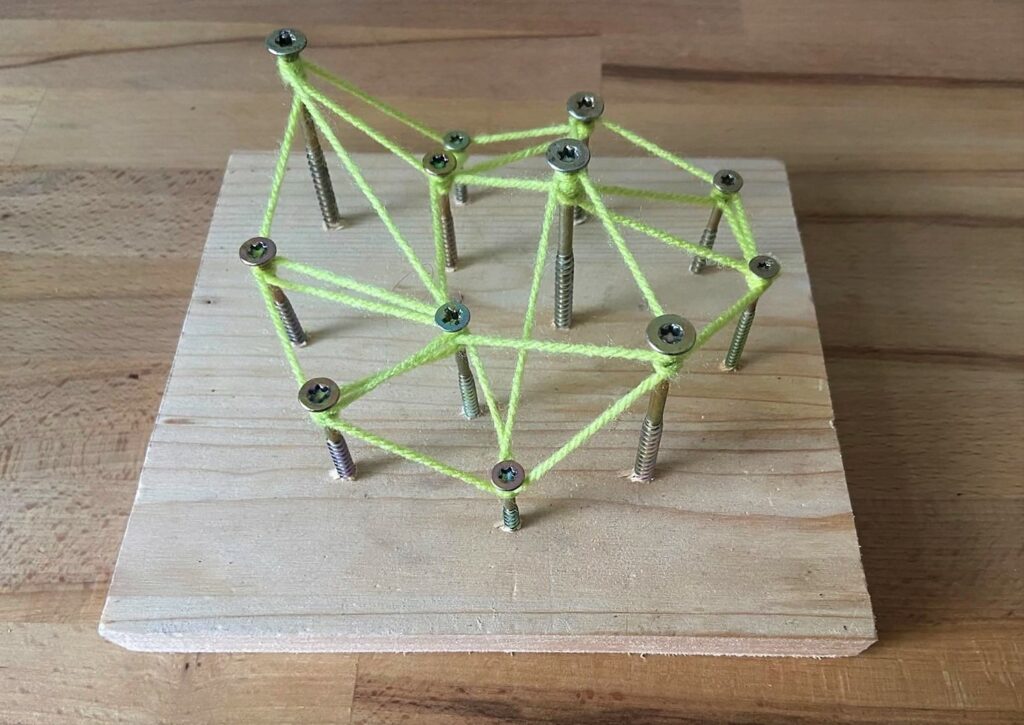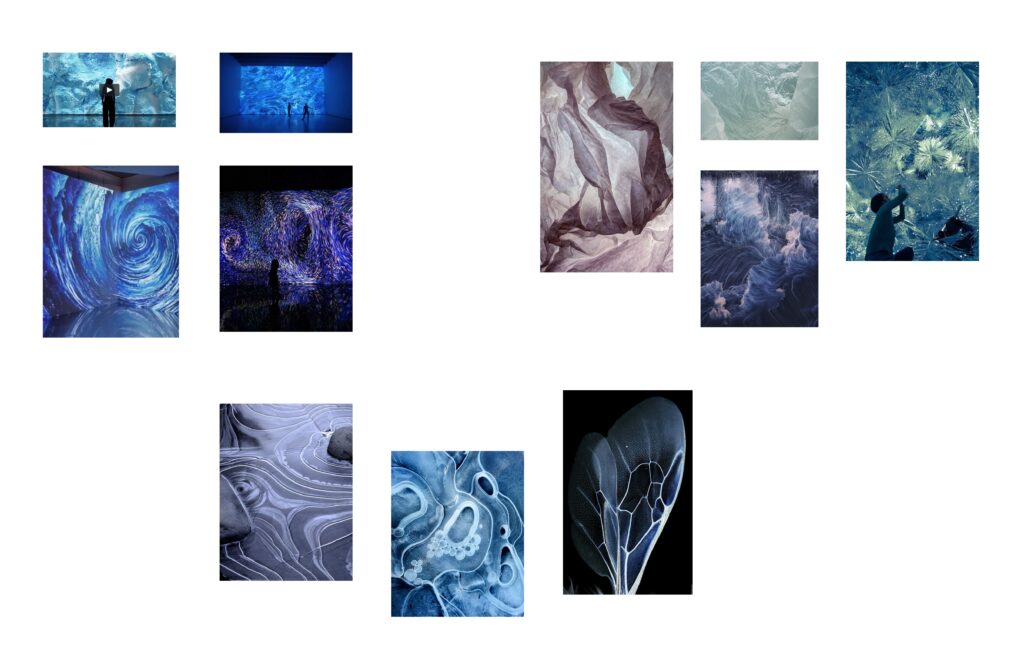Farbsymbolik – wie Farben mit Eigenschaften assoziiert werden
In der Farbpsychologie sprechen Wissenschaftler von Farbsymbolik. Sie bezeichnet die Übertragung von Merkmalen von Farben auf Motive und Gegenstände. Eine Farbe spricht die Gefühle des Kunden an. Er verbindet mit ihr bestimmte Eigenschaften und assoziiert diese mit einem Produkt oder einer Marke. Die Farbassoziation nimmt damit unmittelbaren Einfluss auf unser Verhalten durch die erzeugten Gefühle. Sie erzeugt Erwartungen, die ein Unternehmen erfüllen sollte. Aus diesem Grund ist es für Marketeers und Unternehmen wichtig, sich der Wirkung einer Farbe in Bezug auf ihre Produkte bewusst zu sein. Nicht jede eignet sich für jeden Zweck.
Farbwahrnehmung ist subjektiv und kulturell beeinflusst
Die Farbwahrnehmung ist subjektiv. Eine in Stein gemeißelte Wahrheit kann es in der Farbsymbolik daher kaum geben. Mitunter wird die Wahrnehmung kulturell beeinflusst. Ein Beispiel: In der arabischen Kultur wird die Farbe Rot mit Hitze und der Eigenschaft „böse“ sowie der Zerstörung in Verbindung gebracht. Das liegt darin begründet, dass die Hitze der arabischen Länder die Lebensbedingungen der Menschen dort erschweren. Im Kulturkreis eher kälterer Länder wie Russland hat die Farbe Rot dagegen eine positive Bedeutung. Solche unterschiedlichen Wahrnehmungen können teilweise in der Sprache einer Bevölkerung ausfindig gemacht werden.
Rot gilt als schwieriger Farbton. Die Wirkung ist enorm gegensätzlich. Steht sie im westlichen Kontext im Grunde für Liebe, Leidenschaft und Energie, hat sie im Marketing eher eine alarmierende Wirkung. In der Werbung steht Rot zum Beispiel für Rabatte und wird als Akzent eingesetzt, um auf bestimmte Artikel aufmerksam zu machen. Sie ist, wie die meisten Farben, facettenreich. In verschiedenen Abstufungen kann sie daher anders assoziiert werden. Ein Weinrot wirkt elegant und exklusiv. Rosa ist verspielt und kindlich. Im Marketing wird diese Farbe gerne für weibliche (junge) Zielgruppen eingesetzt. Ein leuchtendes Rot sticht als Signalfarbe im Marketing heraus, gerade weil sie für „Achtung“ und „Vorsicht“ steht. Wer den Farbton im Marketing einsetzt – egal in welcher Abstufung – sollte auf die Menge achten, um nicht aggressiv zu wirken. Schließlich wollen Sie punktgenau die Aufmerksamkeit erzeugen und keine falschen Assoziationen hervorrufen.
- Positive Assoziation: Leidenschaft, Liebe, Wärme, Energie, Selbstvertrauen
- Negative Assoziation: Wut, Gefahr, Feuer, Krieg
- Abstufungen: Dunkelrot, Weinrot, Rosa, Pink etc.
- Wirkung im Marketing: Signalfarbe, für Aktionen besonders geeignet
- Wichtig: Rot in geringen Mengen einsetzen, um Effekte nicht übertrieben einzusetzen
Blau – Seriosität in Farbe
Blau ist im Marketing äußerst beliebt. Die Farbe steht für Glaubwürdigkeit, Zuverlässigkeit und Sicherheit sowie Professionalität, Ehrlichkeit und Treue. Gerade Versicherer wie AXA oder Allianz und Banken wie Volksbanken nutzen Blau. Aber auch in der Kosmetik- und Medizinbranche ist Blau eine bevorzugte Farbe. Denn sie wird fast ausschließlich positiv assoziiert. In der Lebensmittelbranche wird die (potenziell) negative Assoziation „Kälte“ ebenfalls ins Positive umgekehrt. Etwa für Erfrischungsgetränke. Blau wird als Marken-Booster eingesetzt. Durchdachte Farbkonzepte spiegeln sich im gesamten Unternehmen wider: im Markenlogo, in einzelnen Kampagnen, in Grafiken, im Briefpapier, im eignene E-Mail Newsletter und in Büroräumlichkeiten. Die Farbe Blau kann ebenfalls in verschiedenen Abstufungen vorkommen: Neben Hellblau, das beruhigend wirkt, findet Türkis gerne in kreativen und fortschrittlichen Unternehmen Anwendung. Ein leuchtendes Blau verleiht Marken einen energetischen Look.
- Positive Assoziation: Glaubwürdigkeit, Zuverlässigkeit, Professionalität, Ehrlichkeit, Treue, Ruhe, Erfrischung, Kreativität, Innovationsgeist
- Negative Assoziation: Kälte, Traurigkeit
- Abstufungen: Hellblau, Türkis, leuchtendes Blau, Dunkelblau etc.
- Wirkung im Marketing: Vermittelt Autorität und Stabilität sowie Sicherheit, kann für Fortschrittlichkeit und Kreativität stehen
Gelb – dynamisch und auffallend
Gelb ist die hellste der Primärfarben und wirkt optimistisch und dynamisch. Der satte Ton liefert Energie und wirkt wärmer, je kräftiger die Farbe ausfällt. Der Farbton wird positiv wahrgenommen: Es steht für Frische, Lebendigkeit und – man denkt mal an Gold– Reichtum. Ähnlich wie Rot kommt Gelb im Marketing eine Signalwirkung zu und wird gerne als Akzent für Aktionen wie einem Call-to-Action eingesetzt. Die Farbe wird schnell wahrgenommen und entfaltet über größere Distanzen Wirkung. Zum Beispiel in einem Logo. Am besten ist es, die Farbe mit einer anderen Farbe zu umranden, damit der Effekt des gelben Logos verstärkt wird. Auch bei Gelb gilt: Einsetzen in Maßen! Nicht in Massen. Sonst kann Gelb schnell billig und aufdringlich erscheinen. Kompromisse können, gerade bei der Kombination aus Rot und Gelb, die bessere Wahl sein.
- Positive Assoziation: Optimismus, Dynamik, Wärme, Frische, Lebendigkeit, Reichtum, Fröhlichkeit
- Negative Assoziation: Gefahr
- Abstufungen: Pastell-Gelb, Sonnengelb, Gold etc.
- Wirkung im Marketing: Signalfarbe, für Aktionen besonders geeignet; ebenso für Produkte geeignet, die mit Vorsicht zu nutzen sind (z.B. bestimmte Werkzeuge)
- Wichtig: Gelb genauso wie Rot mit Bedacht einsetzen, um nicht billig oder aufdringlich zu wirken
Grün – Naturverbundenheit im Marketing
Wer Grün als Farbe im Marketing verwendet, setzt auf die Wirkung der Natur. Die Farbe ist äußerst positiv behaftet und steht für Natürlichkeit, Gesundheit, Hoffnung und Glück. Sie eignet sich sehr gut, die Haltung Deiner Zielgruppe gegenüber Deinem Unternehmen emotional zu beeinflussen. Dein Unternehmen wird mit Nachhaltigkeit in Verbindung gebracht. Gerade heutzutage findet sich die Farbe daher häufiger im Marketing. Das Thema Umweltbewusstsein war nie so präsent, wie jetzt. Neben der Verbundenheit zur Natur strahlt die Farbe Ruhe aus und ist für das Auge angenehm zu betrachten. Das ist abhängig von der Schattierung: Ein sehr dunkles Grün hat eine beruhigende und seriösere Ausstrahlung, als helle Grüntöne. Sie wirken eher lebendig, frisch und jung. Die Facetten der Farbe eignen sich vor allem für Unternehmen, die mit ihren Marken auf Natürlichkeit setzen und das Gesunde in den Vordergrund stellen wollen. Aus diesem Grund finden sich Farben aus dem Grünspektrum häufig in der Lebensmittelindustrie oder im Gesundheitssektor.
- Positive Assoziation: Umwelt/Natur, Glück, Hoffnung, Harmonie, Gesundheit, Balance, Erneuerung, Linderung, Wachstum, Ruhe, Lebendigkeit, Jugend
- Abstufungen: Dunkelgrün, Hellgrün, Pastell-Grün, etc.
- Wirkung im Marketing: Steht für Umweltfreundlichkeit und Nachhaltigkeit; stellt Gesundheit in den Fokus und wird gerne in der Lebensmittelindustrie sowie im Gesundheitswesen eingesetzt
Orange – Vitalität und Humor
Orange hat in der Farbpsychologie ausschließlich positive Eigenschaften: Vitalität, Freundlichkeit und Humor. Es ist eine aktive Farbe und eignet sich gerade aufgrund der Assoziation mit Vitalität für Unternehmen aus der Gesundheitsbranche. Da Orange aus Rot und Gelb gemischt wird und auffällig im Ton ist, zählt sie ebenfalls zu den Farben mit Signalwirkung. Orange steht für Bezahlbarkeit und ist ein Kompromiss zum schnell aggressiv wirkendem Rot oder zum gerne billiger wirkendem Gelb. In der Werbung findet Orange gerne Einsatz im Bereich Kinder, da die Farbe mit Humor und Verspieltheit verbunden wird.
- Positive Assoziation: Vitalität, Freundlichkeit, Humor, Erschwinglichkeit, Jugend
- Negative Assoziation: je nach Farbintensität Gefahr
- Wirkung im Marketing: schwächere Signalfarbe als Rot und als Kompromiss gut geeignet, wird gerne in Verbindung mit Kindern und Beauty-Produkten eingesetzt (Jugend)
Violett – Sinnlich und geheimnisvoll
Violett wird ebenfalls stark mit positiven Emotionen in Verbindung gebracht. Die Farben des Violettspektrums stehen für Kreativität, Mystik, Spiritualität und Reichtum sowie Luxus. Sie wirken geheimnisvoll und sinnlich. Daher werden Violett-Töne gerne für Beauty- und Wellness-Artikel genutzt. Ebenso findet sich die Farbe häufig in der Kreativbranche oder bei Luxus-Unternehmen. Auch Unternehmen, in denen Kreativität durch Innovationsgeist geprägt ist, wird Violett verwendet. Eine Abstufung von Violett ist hier beispielsweise das Telekom-Magenta. Oder denke an die Suchmaschine Yahoo!
- Positive Assoziation: Adel, Luxus, Mystik, Wohlstand (Reichtum), Fantasie, Spiritualität, Magie, Kreativität
- Negative Assoziation: Intrige
- Abstufungen: Magenta, Flieder, etc.
- Wirkung im Marketing: Einzigartigkeit, da die Farbe in der Natur seltener ist; wird oft für Luxus-Güter genutzt
Braun – im Marketing unbeliebt
Brauntöne finden sich im Marketing kaum. Und das, obwohl aus farbpsychologischer Sicht Braun für Verlässlichkeit, Geborgenheit und Erdverbundenheit steht. Im Grunde kannst Du mit Braun ebenso Umweltbewusstsein und Natürlichkeit ausdrücken, wie mit Grün. Das Problem im Marketing besteht darin, dass Braun schnell mit Schmutz in Verbindung gebracht wird. Dennoch solltest Du Braun nicht missachten: Inzwischen haben Unternehmen die positiven Assoziationen der Farbe nämlich für sich erkannt. Als dezentere Alternative zu Grün findet sie sich in Werbung für Kaffee, Holz oder Outdoor-Bekleidung. Eben in allen Bereichen, die mit Natur und Umweltbewusstsein verbunden werden.
- Positive Assoziation: Verlässlichkeit, Tradition, Erdverbundenheit, Natürlichkeit, Wärme
- Negative Assoziation: Schmutz
- Wirkung im Marketing: Dezentere Alternative zu Grüntönen, die dennoch die Natürlichkeit betonen; Verlässlichkeit und Genuss werden in den Vordergrund gestellt (UPS als Lieferdienst, Kaffee als Genussgut)
Schwarz – Modern und vielseitig
Schwarz gehört nicht in den Bereich des sichtbaren Farbspektrums. Schwarz ist per Definition die Abwesenheit von Licht. Und die Farbe ist ambivalent: Heutzutage wird sie als modern, mächtig, elegant und seriös empfunden. Sie aber auch bedrohlich und erdrückend wirken und steht traditionell für Trauer, Tod und Unglück. Im Marketing entfaltet sie dennoch in allen Nuancen enormes Potenzial. In der Corporate Identity (CI) wird abgeschwächtes Schwarz häufig eingesetzt – gerade in Unternehmen mit technischem Hintergrund. Der Grund: Schwarz zeugt in der heutigen Zeit von Qualität und Luxus. Abstufungen von Grau harmonisieren zudem gut mit anderen Farben und stehen für Professionalität und Erfahrung. Besonders edel erscheint Schwarz, wenn die Grau-Variante Silber zum Einsatz kommt. Das Logo von Apple und Mercedes gehört zu den besten Beispielen in puncto Farb-Design.
- Positive Assoziation: Luxus, Eleganz, Seriosität, Macht, Förmlichkeit, Geheimnis, Kraft
- Negative Assoziation: Dunkelheit, Trauer, Tod, Unglück
- Abstufungen: Graustufen, Silber als Highlight
- Wirkung im Marketing: Strahlt Modernität aus, wirkt edel und eignet sich für innovative Marken und Produkte
Weiß – besonders positive Wirkung
Weiß steht traditionell für Reinheit und Unschuld. Für Frieden und Gesundheit. Negative Assoziationen wie Farblosigkeit, Kälte und Leere werden bei Weiß im Marketing umgekehrt. So wird die Farbe gerne genutzt, um den erfrischenden Charakter eines kühlen Getränks zu unterstützen. Statt „Einfallslosigkeit“ wird der Farbe Weiß Einfachheit zugeschrieben. Diese Eigenschaft wird gerne in Bereichen genutzt, die normalerweise als hochkomplex gelten. Etwa in der IT. Weiß hebt hier Unternehmen hervor, die einfache Lösungen für Kunden bieten. Die Farblosigkeit wird zudem in Reinheit umgemünzt. Denk an die Hochzeitsbranche oder das Design von Waschmittel-Marken wie Weißer Riese.
- Positive Assoziation: Reinheit, Sauberkeit, Einfachheit, Jugend, Ehre, Frieden, Unschuld, Gesundheit
- Negative Assoziation: Kälte, Farblosigkeit, Einfallslosigkeit, Leere
- Wirkung im Marketing: Wirkt erfrischend, mindert Komplexität, betont verschiedene Produkteigenschaften wie Reinheit bei Waschmitteln


